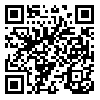Volume 10, Issue 1 (2019)
LRR 2019, 10(1): 1-24 |
Back to browse issues page
Download citation:
BibTeX | RIS | EndNote | Medlars | ProCite | Reference Manager | RefWorks
Send citation to:



BibTeX | RIS | EndNote | Medlars | ProCite | Reference Manager | RefWorks
Send citation to:
Momeni F. Aspect-based Verb in Tonekaboni Dialect. LRR 2019; 10 (1) :1-24
URL: http://lrr.modares.ac.ir/article-14-1626-en.html
URL: http://lrr.modares.ac.ir/article-14-1626-en.html
Assistant Professor of General Linguistics - Islamic Azad University, Chalous Branch.
Abstract: (9887 Views)
The dialect of Tonekaboni differs from the dialects of the speakers in the East of Mazandaran and the West of Guilan where the native speakers of the three regions use Persian to communicate. During the implementation of a part of a research project and in order to find the reason for the lack of mutual understanding between the speakers of the east and west of Mazandaran and the difference between their dialects which both are taken into account as Mazandarani (Tabari) language, the author has concluded that the most important factor is the difference between the construction of their verbs due to the unusual stem in Tonekaboni verbs. The aim of this paper is to describe the verb stem and analyze its different structure in Tonekaboni dialect. In this research, a fieldwork for data gathering was applied through a targeted interview with 10 native speakers to obtain the different paradigms of verbs. The current study showed that verbs stems in this dialect were based on "aspect", while in most languages, like Iranian language family, the stems of verb are based on its tense (commonly present and past), to which inflectional affixes – including aspect of the verb – are attached. This study on one hand, introduces the distinctive feature of aspect -based stems in Tonekaboni, the most widely-used dialect of one of the Caspian language group, which is in decline; and on the other hand it may be useful for dialectology, typology and sociolinguistic studies.
| Rights and permissions | |
 |
This work is licensed under a Creative Commons Attribution-NonCommercial 4.0 International License. |







